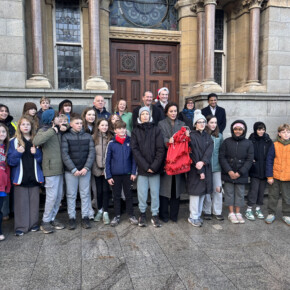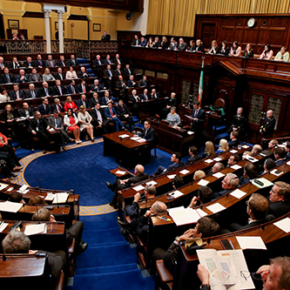HISTORY: Remembering Máirtín Ó Cadhain
Dublin People 08 Jan 2016
MÁIRTÍN Ó Cadhain, one of the most prominent Irish language writers and perhaps the most militant Irish language activist of the 20th century, was born on January 4 1906.
Ó’Cadhain’s mission in life was to see the Irish language restored as a vibrant community language, not just in the Gaeltacht, but across Ireland.
Born in the Connemara Gaeltacht to a family of small farmers, Ó Cadhain began his life amongst one of Ireland’s most marginalised communities. He was a bright student and on leaving school trained as a teacher in Dublin. Returning to the Gaeltacht in 1926, now aged just 20, Ó Cadhain had his first short story published and was appointed principal of the school in Camas.
A dedicated disciple of James Connolly and Padraig Pearse, Ó Cadhain was by now deeply concerned by what he saw as the abject poverty of the Gaeltacht and by what he viewed as a national counter revolution following the formation of the Irish Free State in 1922.
In his view the new State was not serious about reviving the language or delivering for the ordinary people.
Deciding it was time to fight back, Ó Cadhain joined the Irish Republican Army and soon became an officer in the local unit.
In 1932 Ó Cadhain transferred to a school in An Carn Mór, Galway were he continued his militant activities, establishing a branch of the Gaelic League and becoming an effective recruiter for the IRA.
By now Ó’Cadhain was a committed Marxist. For him, the decline of the Irish language and the utter neglect of Gaeltacht communities by the Irish Free State was a class issue.
The language could only be restored through the ‘Re-conquest of Ireland’. Ó Cadhain began to encourage Irish speakers across the country to adopt socialism as the only viable method to save both the language and the struggling Gaeltacht communities.
In 1934, Ó Cadhain was a founding member of Muintir na Gaeltachta, dedicated to social agitation for the rights of the people of the Gaeltacht.
Their campaigns had some success and led to the establishment of a Government scheme to transfer landless families from the Connemara Gaeltacht to a new Irish speaking community in Rath Cairn, County Meath, which remains a thriving Gaeltacht today.
Ó Cadhain’s activities now began to bring him to the attention of the authorities and in 1936 he was dismissed from his teaching position for being a ‘subversive’. Moving to Dublin, Ó Cadhain was elected to the IRA’s Army Council a position he hoped to use to advance the ‘Re-conquest of Ireland’.
Along with other prominent republicans, Ó’Cadhain spent the majority of WWII interned in the Curragh military camp.
While interned, Ó Cadhain continued his Irish language activism, teaching the language to republican prisoners.
Released in 1944, his most important novel, ‘Cré na Cille’, was published in 1949 and led to his recognition as the most important Irish language writer of the 20th century.
In 1956, Ó Cadhain was appointed as a professor of Irish at Trinity College Dublin, a position he used to continue to promote an Irish language revival.
During the 1960s Ó Cadhain was a leading light in Gluaiseacht Cheartas na Sibhialta na Gaeltacht, a mass movement that demanded rights for Irish speakers.
Ó Cadhain died in 1970 and today, although virtually unknown amongst English speakers, his ideas continue to inspire the Irish language movement.
It is a fitting legacy that the Government has recognised that his idea suggesting the creation of ‘urban Gaeltacht’ is an important step for the salvation of the Irish language in the 21st century.











